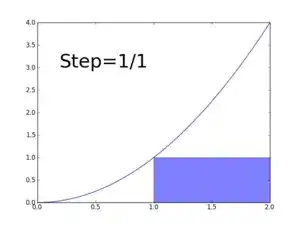$dx$ indicates precisely what you said. It’s not really multiplication though.
In substitution, you would need to substitute $u$ and $\frac{du}{dx}$. Imagine you have the following integral. (Very simple example.)
$$\int (2x)^2 dx$$
$$\color{blue}{u = 2x} \implies \color{purple}{\frac{du}{dx} = 2}$$
$$\int \frac{1}{2}\cdot (2x)^2 \color{purple}{2}dx = \frac{1}{2}\int (2x)^2 2dx$$
$$\implies \color{blue}{du = 2dx}$$
$$\frac{1}{2} \int \color{blue}{u}^2 \color{blue}{du}$$
Which is easily solved.
The point is that $dx$ and $du$ show what variable you are integrating with respect to. When you change the variable, you need to integrate it with respect to that variable, so you carry out a process similar to the one above.
A definite integral is one that is restricted to the region between two $x$-coordinates. For instance:
$$\int 2x dx = x^2+C$$
$$\int_{1}^{4} 2x dx = 4^2+C-\big(1^2+C\big) = 16+C-1-C = 15$$
There, the integral was found in the region between $x = 1$ and $x = 4$. And yes, integrals are often related to the area under the curve, or in a more practical manner, “accumulation.”
Say you have an original function of $f(x)$. The derivative of the function, or $f’x$, shows the “instantaneous” rate of change. Integrating $f’x$ gives the accumulation, or area of the graph, which is the original function: $f(x)$. (Hence, integrals are often referred to as antiderivatives.)
You may want to check out Riemann sums and integrals to get a better idea.
The basic idea is to divide the area under a curve into rectangles of a certain width, usually, but not always, the same width. The more you shrink down the width of the rectangles and increase the number of rectangles, the more you approach the true area.
For instance, say you choose the rectangles to be of equal width: $\Delta x$. If you choose the height of a rectangle to be the height at the point $f(x)$ (left-hand points), then each rectangle will have the area $\Delta x\cdot (f(x_i))$.
Thus, the area is the sum of all $n$ such rectangles.
$$A \approx \sum_{i = 1}^{n} \Delta x\cdot (f(x_i))$$
As $n$ keeps increasing, the number of rectangles will increase and the rectangles themselves will become thinner and thinner. ($n$ becomes infinitely large and $\Delta x$ becomes infinitely thin.)
$$A = \lim_{n \to \infty} \sum_{i = 1}^{n} \Delta x\cdot (f(x_i))$$
To observe this, you can try with a function. Say $f(x) = x^2$ and you would want to calculate the area between $x = 0$ and $x = 2$. Keep increasing $n$ and see what happens. (I’ll show left-hand side values. Right-hand side will also converge to the same value.)
$$n = 1 \implies A = 0$$
$$n = 2 \implies A = 1$$
$$n = 4 \implies A = 1.75$$
$$n = 8 \implies A = 2.1875$$
Keep continuing. For example:
$$n = 1024 \implies A \approx 2.66276$$
The more $n$ increases, the closer the value gets to $2.\overline{6}$. Checking the definite integral, that is exactly what you obtain: $\frac{8}{3}$. The animation below can make it clearer.

